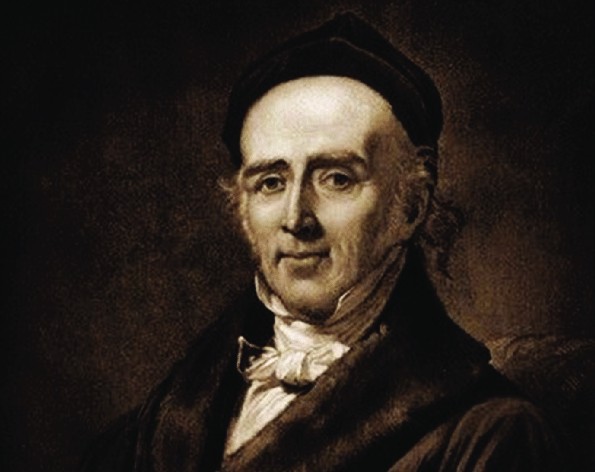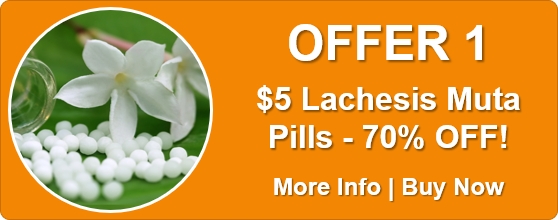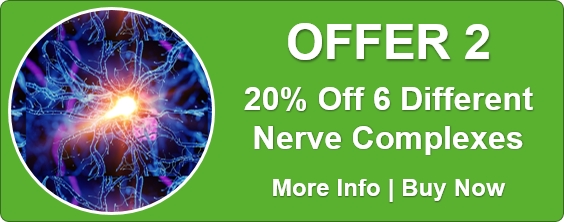The Organon – Aphorism 101-110

§ 101
It may easily happen that in the first case of an epidemic disease that presents itself to the physician’s notice he does not at once obtain a knowledge of its complete picture, as it is only by a close observation of several cases of every such collective disease that he can become conversant with the totality of its signs and symptoms. The carefully observing physician can, however, from the examination of even the first and second patients, often arrive so nearly at a knowledge of the true state as to have in his mind a characteristic portrait of it, and even to succeed in finding a suitable, homoeopathically adapted remedy for it.
§ 102
In the course of writing down the symptoms of several cases of this kind the sketch of the disease picture becomes ever more and more complete, not more spun out and verbose, but more significant (more characteristic), and including more of the peculiarities of this collective disease; on the one hand, the general symptoms (e.g., loss of appetite, sleeplessness, etc.) become precisely defined as to their peculiarities; and on the other, the more marked and special symptoms which are peculiar to but few diseases and of rarer occurrence, at least in the same combination, become prominent and constitute what is characteristic of this malady.1 All those affected with the disease prevailing at a given time have certainly contracted it from one and the same source and hence are suffering from the same disease; but the whole extent of such an epidemic disease and the totality of its symptoms (the knowledge whereof, which is essential for enabling us to choose the most suitable homoeopathic remedy for this array of symptoms, is obtained by a complete survey of the morbid picture) cannot be learned from one single patient, but is only to be perfectly deduced (abstracted) and ascertained from the sufferings of several patients of different constitutions.
1 The physician who has already, in the first cases, been able to choose a remedy approximating to the homoeopathic specific, will, from the subsequence cases, be enabled either to verify the suitableness of the medicine chosen, or to discover a more appropriate, the most appropriate homoeopathic remedy.
§ 103
In the same manner as has here been taught relative to the epidemic disease, which are generally of an acute character, the miasmatic chronic maladies, which, as I have shown, always remain the same in their essential nature, especially the psora, must be investigated, as to the whole sphere of their symptoms, in a much more minute manner than has ever been done before, for in them also one patient only exhibits a portion of their symptoms, a second, a third, and so on, present some other symptoms, which also are but a (dissevered, as it were), portion of the totality of the symptoms which constitute the entire extent of this malady, so that the whole array of the symptoms belonging to such a miasmatic, chronic disease, and especially to the psora, can only be ascertained from the observation of very many single patients affected with such a chronic disease, and without a complete survey and collective picture of these symptoms the medicines capable of curing the whole malady homoeopathically (to wit, the antipsorics) cannot be discovered; and these medicines are, at the same time, the true remedies of the several patients suffering from such chronic affections.
§ 104
When the totality of the symptoms that specially mark and distinguish the case of disease or, in other words, when the picture of the disease, whatever be its kind, is once accurately sketched,1 the most difficult part of the task is accomplished. The physician has then the picture of the disease, especially if it be a chronic one, always before him to guide him in his treatment; he can investigate it in all its parts and can pick out the characteristic symptoms, in order to oppose to these, that is to say, to the whole malady itself, a very similar artificial morbific force, in the shape of a homoeopathically chosen medicinal substance, selected from the lists of symptoms of all the medicines whose pure effects have been ascertained. And when, during the treatment, he wishes to ascertain what has been the effect of the medicine, and what change has taken place in the patient’s state, at this fresh examination of the patient he only needs to strike out of the list of the symptoms noted down at the first visit those that have become ameliorated, to mark what still remain, and add any new symptoms that may have supervened.
1 The old school physician gave himself very little trouble in this matter in his mode of treatment. He would not listen to any minute detail of all the circumstances of his case by the patient; indeed, he frequently cut him short in his relation of his sufferings, in order that he might not be delayed in the rapid writing of his prescription, composed of a variety of ingredients unknown to him in their true effects. No allopathic physician, as has been said, sought to learn all the circumstances of the patient’s case, and still less did he make a note in writing of them. On seeing the patient again several days afterwards he recollected nothing concerning the few details he had heard at the first visit (having in the meantime seen so many other patients laboring under different affections); he had allowed everything to go in at one ear and out at the other. At subsequent visits he only asked a few general questions, went through the ceremony of feeling the pulse at the wrist, looked at the tongue, and at the same moment wrote another prescription, on equally irrational principles, or ordered the first one to be continued (in considerable quantities several times a day), and, with a graceful bow, he hurried off to the fiftieth or sixtieth patient he had to visit, in this thoughtless way, in the course of that forenoon. The profession which of all others requires actually the most reflection, a conscientious, careful examination of the state of each individual patient and a special treatment founded thereon, was conducted in this manner by persons who called themselves physicians, rational practitioners. The result, as might naturally be expected, was almost invariably bad; and yet patients had to go to them for advise, partly because there were none better to be had, partly for fashion’s sake.
§ 105
The second point of the business of a true physician related to acquiring a knowledge of the instruments intended for the cure of the natural diseases, investigating the pathogenetic power of the medicines, in order, when called on to cure, to be able to select from among them one, from the list of whose symptoms an artificial disease may be constructed, as similar as possible to the totality of the principal symptoms of the natural disease sought to be cured.
§ 106
The whole pathogenetic effect of the several medicines must be known; that is to say, all the morbid symptoms and alterations in the health that each of them is specially capable of developing in the healthy individual must first have been observed as far as possible, before we can hope to be able to find among them, and to select, suitable homoeopathic remedies for most of the natural disease.
§ 107
If, in order to ascertain this, medicines be given to sick persons only, even though they be administered singly and alone, then little or nothing precise is seen of their true effects, as those peculiar alterations of the health to be expected from the medicine are mixed up with the symptoms of the disease and can seldom be distinctly observed.
§ 108
There is, therefore, no other possible way in which the peculiar effects of medicines on the health of individuals can be accurately ascertained – there is no sure, no more natural way of accomplishing this object, than to administer the several medicines experimentally, in moderate doses, to healthy persons, in order to ascertain what changes, symptoms and signs of their influence each individually produces on the health of the body and of the mind; that is to say, what disease elements they are able and tend to produce1, since, as has been demonstrated (§§ 24-27), all the curative power of medicines lies in this power they possess of changing the state of man’s health, and is revealed by observation of the latter.
1 Not one single physician, as far as I know, during the previous two thousand five hundred years, thought of this so natural, so absolutely necessary and only genuine mode of testing medicines for their pure and peculiar effects in deranging the health of man, in order to learn what morbid state each medicine is capable of curing, except the great and immoral Albrecht von Haller. He alone, besides myself, saw the necessity of this (vide the Preface to the Pharmacopoeia Helvet, Basil, 1771, fol., p.12); Nempe primum in corpore sano medela tentanda est, sine peregrina ulla miscela; odoreque et sapore ejus exploratis, exigua illiu dosis ingerenda et ad ommes, quae inde contingunt, affectiones, quis pulsus, qui calor, quae respiratia, quaenam excretiones, attendum. Inde ad ductum phaenomenorum, in sano obviorum, transeas ad experimenta in corpore aegroro,” etc. But no one, not a single physician, attended to or followed up this invaluable hint.
§ 109
I was the first that opened up this path, which I have pursued with a perseverance that could only arise and be kept up by a perfect conviction of the great truth, fraught with such blessings to humanity, that it is only by the homoeopathic employment of medicines1 that the certain cure of human maladies is possible.2
1 It is impossible that there can be another true, best method of curing dynamic diseases (i.e., all diseases not strictly surgical) besides homoeopathy, just as it is impossible to draw more than one straight line betwixt two given points. He who imagines that there are other modes of curing diseases besides it could not have appreciated homoeopathy fundamentally nor practised it with sufficient care, nor could he ever have seen or read cases of properly performed homoeopathic cures; nor, on the other hand, could he have discerned the baselessness of all allopathic modes of treating diseases and their bad or even dreadful effects, if, with such lax indifference, he places the only true healing art on an equality with those hurtful methods of treatment, or alleges the latter to be auxiliaries to homoeopathy which it could not do without! My true, conscientious followers, the pure homoeopathists, with their successful, almost never-failing treatment, might teach these persons better.
2 The first fruits of these labors, as perfect as they could be at that time, I recorded in the Fragmenta de viribus medicamentorum positivis, sive in sano corpore humano observatis, pts. I, ii, Lipsiae, 8, 1805, ap. J. A. Barth; the more mature fruits in the Reine Arzneimittellebre, I Th., dritte Ausg.; II Th., dritte Ausg., 1833; III Th., zweite Ausg., 1825; IV Th., zw. Ausg., 1827 (English translation, Materia Medica Pura, vols I and ii); and in the second, third, and fourth parts of Die chronischen Krankheiten, 1828, 1830, Dresden bei Arnold (2nd edit., with a fifth part, Dusseldorf bei Schaub, 1835, 1839).
§ 110
I saw, moreover, that the morbid lesions which previous authors had observed to result from medicinal substances when taken into the stomach of healthy persons, either in large doses given by mistake or in order to produce death in themselves or others, or under other circumstances, accorded very much with my own observations when experimenting with the same substances on myself and other healthy individuals. These authors give details of what occurred as histories of poisoning and as proofs of the pernicious effects of these powerful substances, chiefly in order to warn others from their use; partly also for the sake of exalting their own skill, when, under the use of the remedies they employed to combat these dangerous accidents, health gradually returned; but partly also, when the persons so affected died under their treatment, in order to seek their own justification in the dangerous character of these substances, which they then termed poisons. None of these observers ever dreamed that the symptoms they recorded merely as proofs of the noxious and poisonous character of these substances were sure revelations of the power of these drugs to extinguish curatively similar symptoms occurring in natural disease, that these their pathogenetic phenomena were intimations of their homoeopathic curative action, and that the only possible way to ascertain their medicinal powers is to observe those changes of health medicines are capable of producing in the healthy organism; for the pure, peculiar powers of medicines available for the cure of disease are to be learned neither by any ingenious a priori speculations, nor by the smell, taste or appearance of the drugs, nor by their chemical analysis, nor yet by the employment of several of them at one time in a mixture (prescription) in diseases; it was never suspected that these histories of medicinal diseases would one day furnish the first rudiments of the true, pure materia medica, which from the earliest times until now has consisted solely of false conjectures and fictions of the imagination – that is to say, did not exist at all.1
1 See what I have said on this subject in the “Examination of the Sources of the Ordinary Materia Medica,” prefixed to the third part of my Reine Arzneimittellebre (translated in the Materia Medica Pura, vol. ii).







